Catholic Church Records in New and Updated Genealogical Collections
Findmypast announces the new catholic church records in their Catholic Heritage Archive this week. This new partnership with British and American Archdioceses will be a monumental help to those searching their early Catholic roots. Also this week, records from Italy and the Netherlands at FamilySearch.
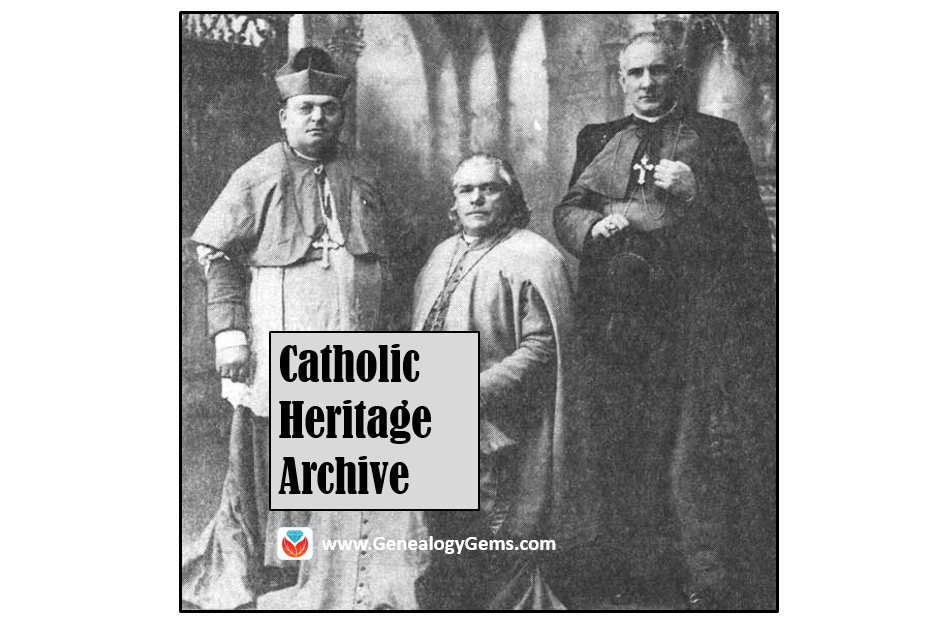
By JakobLazarus (Own work) [CC BY-SA 3.0 (http://creativecommons.org/licenses/by-sa/3.0)], via Wikimedia Commons
Catholic Church Records in the Catholic Heritage Archive
Findmypast announced their new Catholic Heritage Archive this past week. They are releasing over 3 million exclusive records including sacramental registers for the Archdiocese of Philadelphia from 1757 to 1916 as well as for the British Archdioceses of Westminster and Birmingham from 1657 forward. This builds on last year’s publication of more than 10 million Irish Catholic parish registers.
The Catholic Church holds some of the oldest and best preserved genealogical records and in the past, have been difficult to access.
In collaboration with various Archdioceses of the Catholic Church, Findmypast is helping to bring these records online in one unified collection for the first time ever. Exclusively available on Findmypast, images of original documents will be completely free to view in many cases. Fully searchable transcripts will also be included, providing family historians from the around the world with easy access to these once closely guarded records.
Click “Play Now” below to listen to Sunny Morton’s brief interview with Findmypast about the announcement: [display_podcast]
The next phase of the Catholic Heritage Archive will include records from the archdioceses of New York and Baltimore as well as additional records from Philadelphia. There are over 30 million records in just these three dioceses. The digitization of the whole archive is a monumental undertaking and, when complete, will contain hundreds of millions of records for the USA alone.
Catholic Heritage Archive Holdings for This Week:
United States – Pennsylvania – Philadelphia – Baptisms
The Philadelphia Roman Catholic Parish Baptisms at Findmypast are the first of these record releases from an agreement made with the Roman Catholic Church to digitize their records. These baptismal records will include a name, their parent’s names, and residence at the time of the event.
Additional information may include place of birth, sponsors, minister who performed the ceremony, and notice of marriage. Catholic priests were charged with noting all vital events of their parishioners. If, for instance, a parishioner married outside her home parish, the priest who performed the marriage would contact her priest to confirm she was baptized and to share the details of her marriage, hence the marriage notice in the baptism register.
United States – Pennsylvania – Philadelphia – Marriages
You can now view a transcript and an image of your ancestor’s marriage register from the Archdiocese of Philadelphia in this collection titled Philadelphia Roman Catholic Parish Marriages from Findmypast.
Information contained in these records include the couple’s names, marriage date and location, and you may find dates and locations of the couples’ baptisms.
All Philadelphia Roman Catholic Parish records are from the Archdiocese of Philadelphia, covering Bucks County, Chester County, Delaware County, Montgomery County, and Philadelphia County.
England – Westminster – Roman Catholic Census
Another Catholic records resource from Findmypast includes the Westminster Roman Catholic Census 1893. As well as the typical information you would expect from a census (occupation, address, birth year, etc.), notes detailing the local priest’s opinion on your ancestor’s faith and dedication to the church let you find out if your ancestor was a good or bad Catholic. Scandalous!
England – Birmingham & Westminster – Roman Catholic Church & Parish Records
Four separate collections, also in the Catholic Heritage Archive at Findmypast, include Roman Catholic baptismal, burial, marriage, and congregational records for locales in England. The records released this week are for the areas covering the Birmingham and Westminster archdioceses. The amount of information in each of these record sets will vary on the age of the record, legibility, and the amount of information recorded by the parish priest. You will find both a transcription and a digital image of the record.
England Roman Catholic Parish Baptisms
England Roman Catholic Parish Burials
England Roman Catholic Parish Marriages
England Roman Catholic Parish Congregational Records
United States – Pennsylvania – Vital Records
Provided by the Historical Society of Pennsylvania, Findmypast brings you a large collection of vital records. The first is titled Historical Society of Pennsylvania, Births & Baptisms. These records include images from a variety of sources spanning years from the late 1600s to the mid 1900s.
It is important to note this may not be the only place to find births or baptisms—and there may be records included that are not births or baptisms in this material from the Historical Society of Pennsylvania.
The Historical Society of Pennsylvania, Deaths & Burials collection will include records that may contain the following information: decedent’s name, date of death and burial, parish and diocese, and could include additional information such as military service, age, and birth date.
The Historical Society of Pennsylvania, Marriages collection is also a helpful group of records and include marriage records ranging from the early 1600s to the late 1900s. You can view a transcript and the original image.
United States – Pennsylvania – Congregational Records
The Historical Society of Pennsylvania, Congregational Records is a unique collection that may give you insight into your ancestor and the church they attended. Not only will images include lists of past ministers, but you may find additional lists of those persons baptized and confirmed. Some of these records may also be used as a source to discover the names of your ancestor’s parents and spouses.
United States – Pennsylvania – WWII Records

Screenshot from Findmypast of the Historical Society of Pennsylvania, WWII Casualty Cards.
The Historical Society of Pennsylvania, Word War II Casualty Cards collection is a group of records created by the Army so if something happened to a local soldier, the newspaper wouldn’t have to scramble for information. These records are particularly relevant in light of the fire at the National Archives and Records Administration in the 1970s when most World War II personnel files were destroyed.
Netherlands – Miscellaneous Records
We have brought you many collections from Findmypast, which require a subscription. However, these next few collections are brought to you by FamilySearch and are free to access.
Netherlands, Archival Indexes, Miscellaneous Records collection has been updated this week at FamilySearch. These records include many record sources, such as civil registration, church records, emigration lists, military registers, and land and tax records. These records cover events like birth, marriage, death, burial, emigration and immigration, military enrollment, and more. These indexes were originally collected, combined and published by OpenArchives. For the entire index collection and more information visit www.openarch.nl.
Italy – Trapani, Civil Registration
FamilySearch brings you updates to the Italy, Trapani, Civil Registration (State Archive), 1906-1928 collection. This collection consists of civil registration of births, marriages, and deaths within the custody of the State Archive of Trapani. Availability of records is largely dependent on time period and locality. This collection of civil registrations records covers the years 1906-1928 and may also include:
- Residency records
- Marriage banns
- Indexes
- Marriage supplements
- Miscellaneous records
Learn More about Institutional Records Research
 From schools and orphanages to prisons, hospitals, asylums, workhouses, and more, there’s a good chance one or more of your ancestors might be found on record in one of the many types of institutions. In this Premium eLearning video, Institutional Records Research Methods, Lisa Louise Cooke presents methods for finding your ancestors in institutional records, from establishing a workflow and investigating clues found in the census and other records to resources and strategies for digging up the records. This 40-minute video includes a downloadable handout and is available right now to all Premium eLearning members. Click here to sign up!
From schools and orphanages to prisons, hospitals, asylums, workhouses, and more, there’s a good chance one or more of your ancestors might be found on record in one of the many types of institutions. In this Premium eLearning video, Institutional Records Research Methods, Lisa Louise Cooke presents methods for finding your ancestors in institutional records, from establishing a workflow and investigating clues found in the census and other records to resources and strategies for digging up the records. This 40-minute video includes a downloadable handout and is available right now to all Premium eLearning members. Click here to sign up!
Beginning British Genealogy: What You Must Know to Start
With about 1/3 of Americans claiming British ancestry, chances are that at some point you will need to extend your research across the Atlantic Ocean. Genealogical research in the British Isles has some important differences when compared to the United States. Guest blogger Kate Eakman, a Senior Researcher for Legacy Tree Genealogists, clarifies confusing terms and helps you get your research started on solid footing!

Britain? England? The United Kingdom?
When beginning British genealogy research, it’s important to first talk about the difference between British and English research. There are several terms which get used interchangeably but which really refer to different locations.
Great Britain is an island, the largest island in the British Isles.
On the island of Great Britain are three of the four sovereign nations which make up the United Kingdom, or the U.K.: England, Wales, and Scotland. Northern Ireland on the island of Ireland is the fourth country of the U.K.
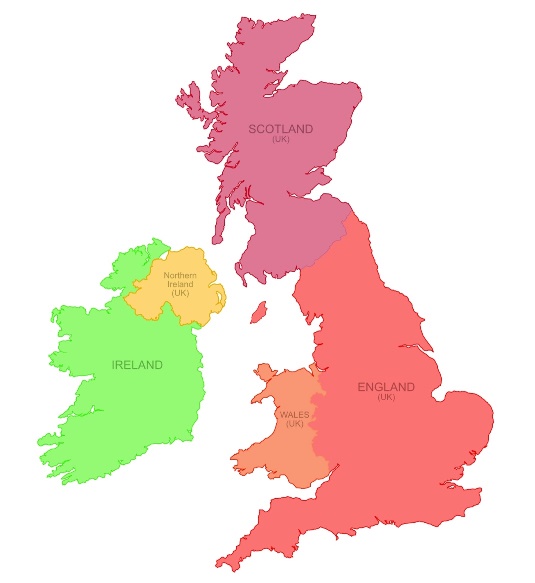
The four countries of the United Kingdom and the Republic of Ireland. Map courtesy Nate Parker.
Usually, when people talk about their British ancestors, what they really mean are their English ancestors. Although we Americans often treat the two words as interchangeable they really aren’t, and I suspect our English friends giggle a bit when they hear us misuse the words.
The four countries of the U.K. have some similarities but many important differences, and that is equally true for genealogical research. Rather than trying to explain all of those differences, this post will focus on English research.
One last thing to keep in mind when we talk about genealogical research in England is that today the country is divided into counties, which are sort of the equivalent of states in the U.S. Older records might refer to those counties as shires, and over time the borders have shifted, shires and counties were added, divided, or absorbed into each other. So a good map or two will be a useful tool to keep handy while you research your English ancestors.
Usually, when people talk about their British ancestors,
what they really mean are their English ancestors
What do you know?
Before beginning British genealogy research and making that leap across the pond, it is a good idea to consider what you already know about your English ancestors. Of course, you have a name, and you probably have an approximate date of birth.
- Were you fortunate enough to find the name of a town or county where that ancestor lived or do all of the census reports and vital records simply say “England”?
- If the ancestor arrived as an adult, what occupation did he pursue?
- When did he or she arrive in the U.S.? Are there any clues on the passenger list to tell you where to start looking?
- Once you have reviewed all of the information you have already acquired about your English ancestor, it’s time to start your research.
Beginning British Genealogy Research with the Census
The first step in most genealogical research is to study the existing census reports. Designed as a means to count the population for a variety of years, the census of Great Britain (including Scotland) is taken every ten years with the earliest records available in 1841. Due to very restrictive privacy laws, the most recent census available is from 1911, with one really valuable exception being the 1939 Register, available at FindMyPast.
Used for genealogical purposes, the census can give a snapshot of the family at the time the census was taken, as well as provide invaluable information such as the birthplace of the individual being recorded, occupation, birth year, and familial relationships. Elderly parents, or widowed mothers, aunts, or sisters, can be discovered living with younger members of the family.
Drawbacks of using the census for genealogical purposes include inaccurate name spellings, inaccurate age reporting, and inaccurate assumptions made by the enumerator. Another thing to keep in mind is that in the 1841 census the enumerated rounded down to the nearest five years the ages of people over 15. So a person who was listed as 25 could have been 25 through 29 years old.
It is important to remember that for the census reports through 1901 the enumerator copied the household information into books, and these copies are what we have today. Of course, when information is copied it is susceptible to error. The person who completed the census form may have had difficult-to-read handwriting, or the enumerator may have entered things on the wrong line. The individual reports have been kept for the 1911 census and offer a greater likelihood that the information they contain is very accurate.
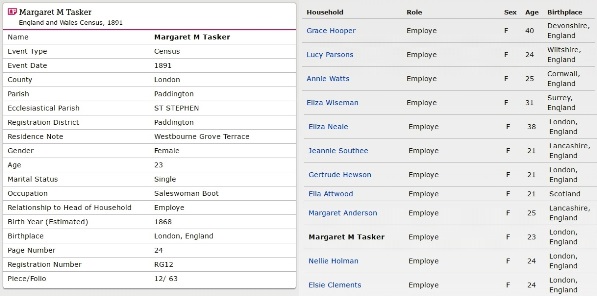
An example of a transcription from the 1891 English Census from Familysearch.org.
Detailed transcripts of English census records are available for free on FamilySearch and the images can be found for a fee at FindMyPast.
It is important to remember that for the census reports through 1901 the enumerator copied the household information into books, and these copies are what we have today.
Civil Registry of Vital Events
All English births, marriages, and deaths were required to be registered in a civil registration office beginning in July of 1837. In addition to the records themselves, there are indices which list the name of the person who was born, married, or died, the place where the event was registered, and the quarter and year in which the event occurred. Because the General Register Office (GRO) will only search one year on either side of the date provided, it is best, but not required, to include the index information when ordering documents from the GRO.
Free BMD is a free database which allows you the most freedom to search for the birth, marriage, and death index record of your relatives. You can enter whatever information you know including the place where the event happened, a specific year or range of years, age, and mother’s maiden name.
Depending on the time period, the index may be handwritten or mechanically printed. The information can then be used to order a copy of the actual record from the General Register Office (GRO) in England for about $10 per record.

An example of handwritten (left) and mechanically printed (right) birth index entries. Photos courtesy https://freebmd.org.uk.
The information contained in birth records includes:
- Name, date, and place of birth;
- Father’s name (if given at time of registration), occupation; and
- Mother’s name, maiden surname.
The parents’ places of birth were added after 1969, and the mother’s occupation is listed after 1984.
Marriage records include:
- Date and place of marriage;
- Name, age and marital status (spinster/bachelor, widowed, divorced) of the bride and groom;
- Occupation and usual address;
- Name and occupation of the fathers of the bride and groom, with a note if either man was deceased at the time of the marriage;
- Names of the witnesses;
- Name of the person who solemnized the marriage.
Death records in the United States are often relied upon to provide the names of the parents. English death records do not include that information and therefore are not as useful for genealogical purposes. Each death record includes:
- Name, date, and place of death;
- Date and place of birth (before 1969 a certificate only showed age of deceased);
- Occupation and usual address;
- Cause of death;
- The identity of the informant.
There are other records available, which we will talk about in a later post, which can be used to find and trace your English family members. The largest group are the religious records, and sometimes those can help you extend your family back in time to the 1600s – 400 years or more!
Beginning British Genealogy Important Take-Aways…
- “Great Britain” is an island. “The United Kingdom” is a country. And “England” is a country. Normally, when people are talking about their British ancestors they are referring to their English ancestors.
- England has counties, or what used to be known as “shires,” which function sort of like our states. The borders have changed over time, as have some of the names, so use a map when necessary to verify where you are researching.
- Census records are available from 1841 through 1911. Really good transcriptions are available for free at Family Search, or on the for-fee site Find My Past. And remember that age idiosyncrasy about the 1841 census.
- Finally, civil birth, marriage, and death records are available from the GRO. You can use the index listings to find the most likely match for your ancestor, and those can be found online at Free BMD.
Have fun and good luck finding your English ancestors!
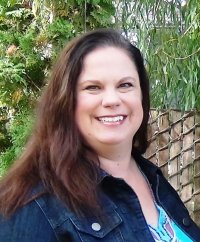 Kate Eakman is a Senior Researcher for Legacy Tree Genealogists, a worldwide genealogy research firm with extensive expertise in breaking through genealogy brick walls.
Kate Eakman is a Senior Researcher for Legacy Tree Genealogists, a worldwide genealogy research firm with extensive expertise in breaking through genealogy brick walls.
Click here to learn more about Legacy Tree services and its research team.
(Read our Disclosure and Affiliate Disclaimer on this page)
Genealogy Gems Podcast Episode 215
The Genealogy Gems Podcast Episode 215
with Lisa Louise Cooke
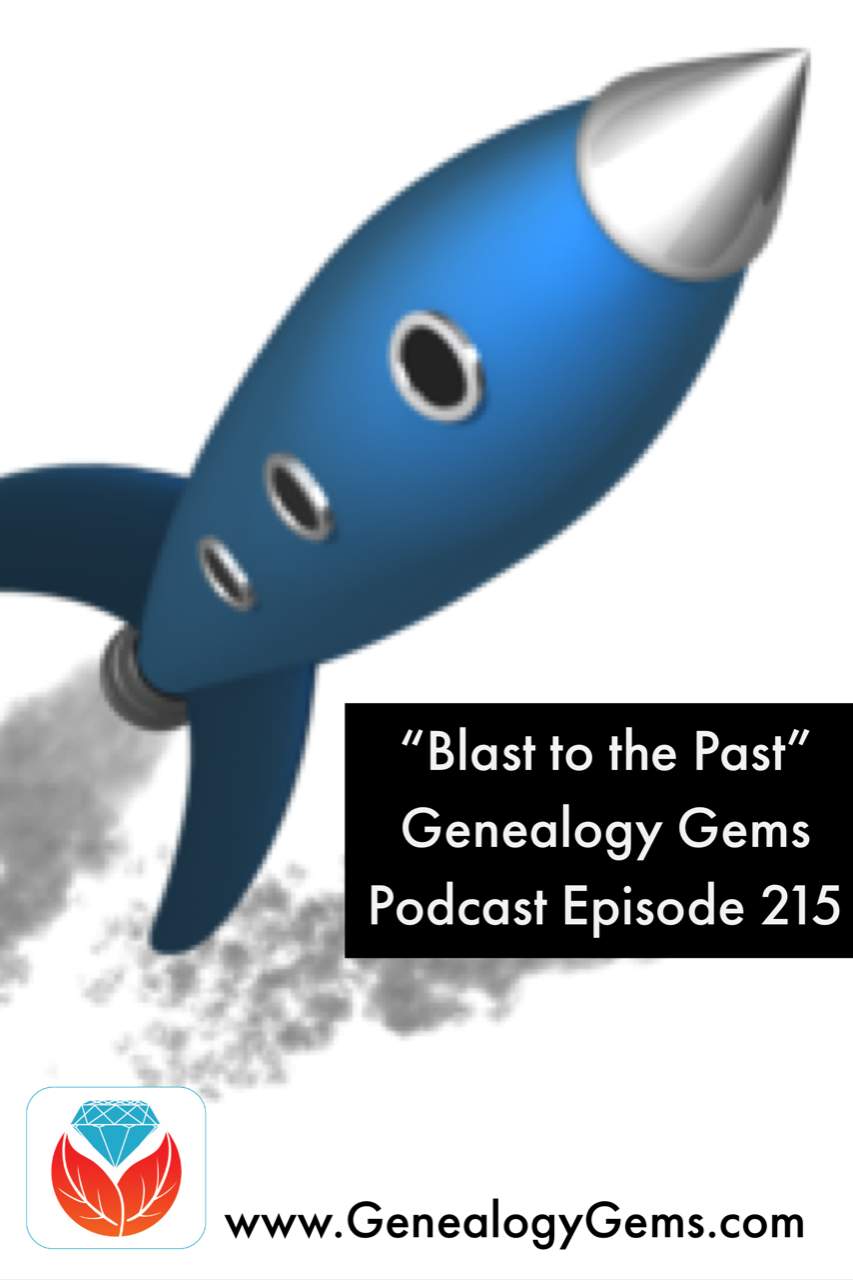
In this “Blast from the Past” episode, Lisa gives voice to the era of silent films, in a unique approach to understanding her great-grandmother’s life. Her passion for this mostly-forgotten film genre comes through in her conversation with film archivist Sam Gill of the Niles Essanay Silent Film Museum in Fremont, California.
Don’t miss these fun segments, too:
A listener writes in after discovering a birth mom’s story in passport records (see what lengths he goes to in order to access the records!).
Just after RootsTech 2018, Your DNA Guide Diahan Southard reports on the latest DNA news you’ll want to know.
NEWS: DNA NEWS ROUNDUP
First up was MyHeritage, showing their support for the 7 million adopted individuals in the United States with their new DNA Quest campaign. MyHeritage will provide 15,000 DNA test kits to eligible participants free of charge, in order to help these adoptees use DNA to reunite them with their biological families. With this initiative they “hope to make this project a shining light for corporate philanthropy and an example to be followed by other commercial companies in their own lines of expertise to make the world a better place.” MyHeritage has assembled an advisory board of genetic genealogists and genetic counselors to help drive this project and ensure it meets the needs of the community. If you or someone you know is interested in participating, you can head on over to the DNA Quest website (www.dnaquest.com) to fill out an application. But you better hurry, the application deadline is April 30, 2018.
Next, addressing the biggest problem in genetic genealogy, namely the looming What Next? question facing millions of newly swabbed participants, MyHeritage announced the Big Tree ? a giant network of genetic and genealogy results that will automate much of the match comparison and tree searching to replace your head-scratching with light-bulb moments. They have already made significant headway on this project, as reported in the journal Science, which MyHeritage’s own chief scientific officer Yaniv Erlich collaborated on. The journal reports that the team of scientists successfully extracted public family trees from Geni.com (a MyHeritage daughter company), and then used a computer program to clean up and link the trees together. It sounds like MyHeritage will be adding genetic data to this kind of tree data in their Big Tree project.
MyHeritage isn’t the only company out to improve the DNA matching experience. UK based LivingDNA announced that they plan to add DNA matching to their popular origins test by third quarter 2018. When they launched in October of 2016, LivingDNA was not offering cousin matching, but opted instead to focus all of their resources on providing very detailed origins reports, including breaking down the UK in to 46 categories. In the months since their launch, they have been working on a genetic matching system, called Family Networks, that will appeal to a wide range of users and will “reduce the risk of human error and take away the tedious task of figuring out how each person on a user’s list are related to one another.” They are promising an experience that provides “a level of relationship prediction and specificity beyond anything currently on the market.”
So it sounds like if you are currently struggling with turning your DNA matches into genealogical discoveries, our testing companies want you to know you are not alone, and they are working hard to provide solutions to these problems. Time will only tell if they can succeed.
Diahan also provides answers to questions asked about this blog post announcing updates to MyHeritage DNA matching technology and its new chromosome browser.
MAILBOX: TOM’S PASSPORT SEARCH SUCCESS

Kathleen Head’s passport applications
U.S. passport applications on Ancestry and FamilySearch through 1925
National Archives article on passport applications
U.S. State Department passport application (since 1925) copy requests
Frequently asked Questions about the Freedom of Information Act
BONUS CONTENT for Genealogy Gems App Users
If you’re listening through the Genealogy Gems app, your bonus content for this episode is a marvelous soundtrack of silent film music, played live (you’ll hear audience laughter occasionally in the background) and supplied by Sam Gill at the Niles Essanay Silent Film Museum. The Genealogy Gems app is FREE in Google Play and is only $2.99 for Windows, iPhone and iPad users.
GEM: INTRODUCTION TO SILENT FILMS
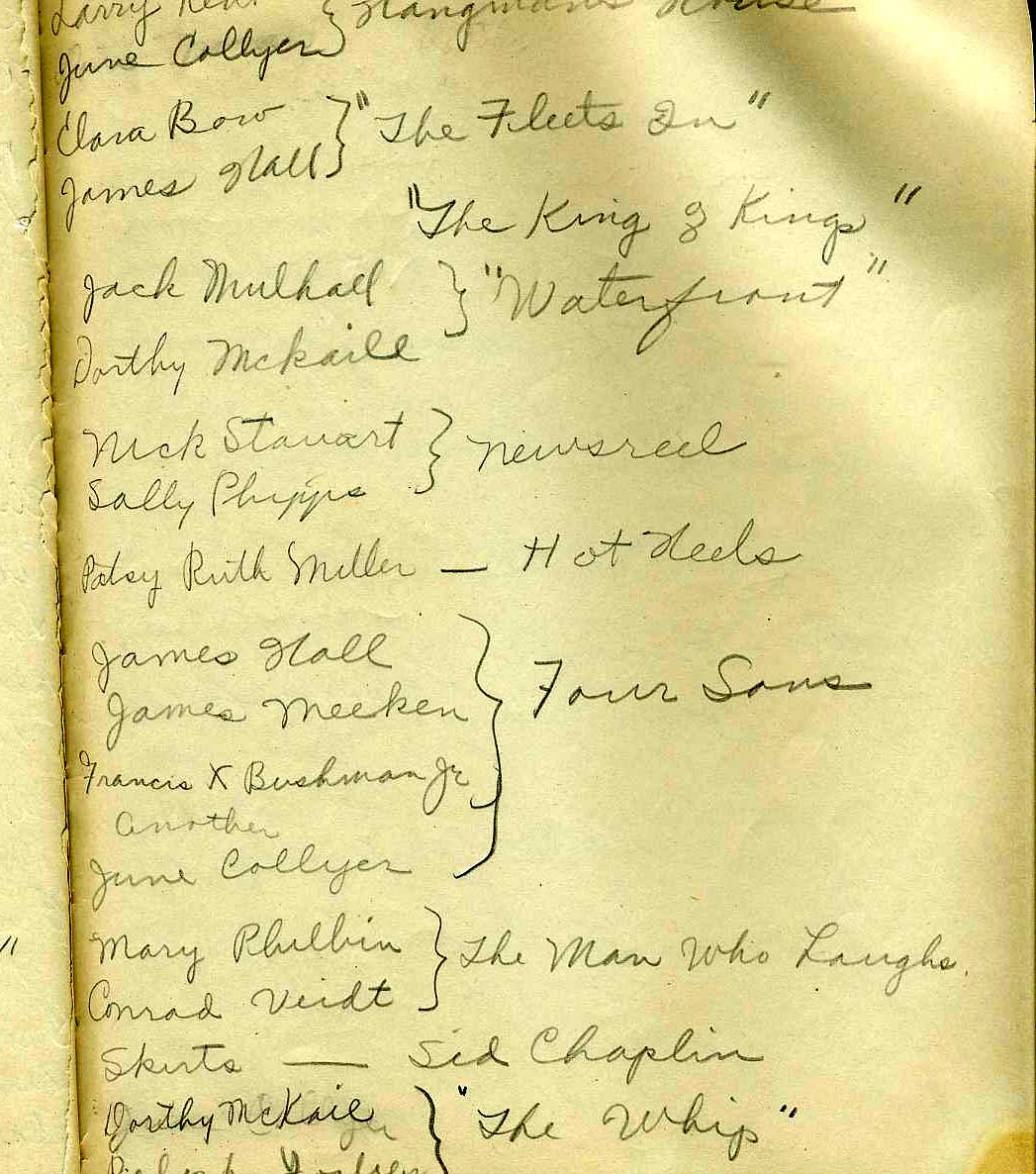
(Image above: a page from Lisa’s grandmother’s journal)
Genealogy Gems Podcast Episode #2 about transcribing family journals and letters was remastered in Episode #134.
Episode #8
Stanford Theatre, Palo Alto, CA (shows silent films)
Internet Movie Database (IMDB)
Niles Essanay Silent Film Museum: the website for this museum is packed with resources: links to Chaplin-Keaton-Lloyd film locations; the International Buster Keaton Society; Classic Images Magazine; a timeline and early history of film and more.
Films mentioned in this episode:
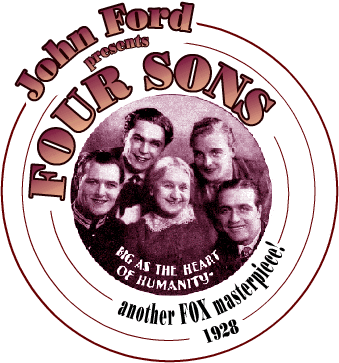
Diary of a Lost Girl starring Louise Brooks (watch trailer)
Safety Last starring Harold Lloyd (watch here)
The Mender of Nets with Mary Pickford (watch here)
The Blot directed by Lois Weber (watch here)
Don’t Park There with Will Rogers (watch here)
Flivvering by Victor Moore
Wife and Auto Trouble directed by Bill Henderson (watch here)
A Trip Down Market Street (watch here)
Wings (watch here)
All Quiet on the Western Front (watch here)
Destruction of San Francisco by Blackhawk Films (watch part here)
Four Sons (watch trailer)
INTERVIEW: SAM GILL, FILM HISTORIAN AND ARCHIVIST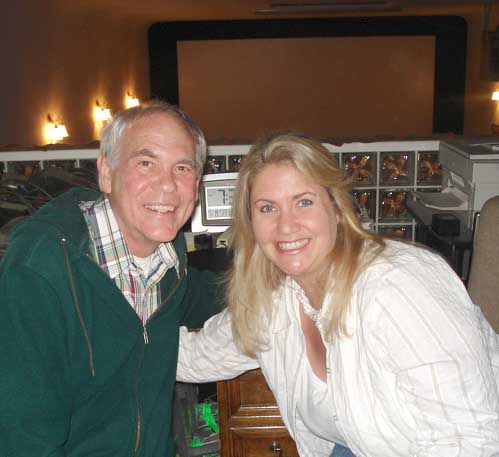
Shown here: Sam Gill and Lisa Cooke at the Niles Essanay Silent Film Museum on the day of this interview. Throughout their conversation, you hear the sounds of excited theater patrons filling the auditorium before a screening.
Sam Gill’s interest in silent film dates to 1966, when as a college student he traveled to Hollywood to interview his aging heroes from the silent screen comedy era. For more than 20 years, he was Archivist of the Academy of Motion Picture Arts and Science’s Margaret Herrick Library, where he established the Academy’s Special Collections and helped it grow to its current status as the preeminent repository for the study of American cinema. He is currently a Board Member of the Niles Essanay Silent Film Museum. Over the years, he has consulted on or otherwise contributed his expertise to numerous film festivals, museum film programs and film history books.
Sam recently sent us these delightful photos (below) of himself over the years:
- (Image 1) 1966: His first trip to Hollywood
- (Image 2) 1974: A news article about a research trip to Florida
- (Image 3) 2017: A birthday party for Diana Serra Cary (Baby Peggy), the last surviving star of the silent screen, held at the Edison Theater of the Niles Essanay Silent Film Museum; also shown is Rena Kiehn, the museum’s publicity director and store manager
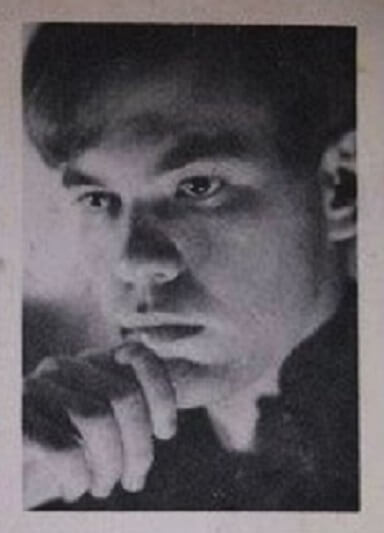
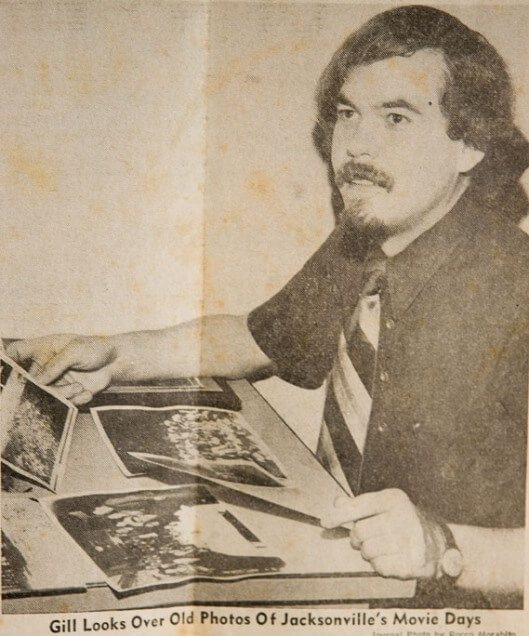

San Francisco Silent Film Festival
How to identify old cars in photographs (a technique that adapts well to film!)
National Film Preservation Foundation (click here to see where to find films they have helped preserve, including Japanese internment camp footage)
MyHeritage.com is the place to make connections with relatives overseas, particularly with those who may still live in your ancestral homeland. Click here to see what MyHeritage can do for you: it’s free to get started.
GEM: HOW TO FIND SILENT FILMS
If you’re looking for a specific movie, start with a Google search with the name in quotations (and, if you like, anything else you know about it, such as an actor or director’s name or the year). You may find lots of results, including a Wikipedia page and film history write-ups, but if you want to WATCH it, limit your search results to Video.
You can also turn to free curated collections online, such as:
101 free silent films: the great classics (links to free film footage on YouTube, Internet Archive, etc.)
YouTube playlist of silent movies
Internet Archive Silent Films collection: feature and short silent films uploaded by Internet Archive users
Silentmovies.info: watch several classic silent films
Netflix.com: Netflix subscribers can access the service’s little-known collection of silent films by entering the Netflix link for browsing its film categories and then the category specific to silent films, 53310:
http://www.netflix.com/browse/genre/ 53310
(Click here to read an article about this tip, along with Netflix’ full list of specific film categories.)
YouTube: watch for free, rent or buy, as shown here:
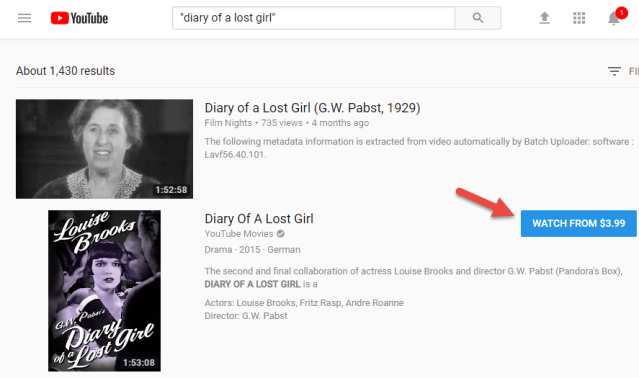
More places to explore for silent films:
Turner Classic Movies (TCM.com): under TCMDb, click Database Home and search for a title you want to watch
Amazon.com: Search for titles in the Video section; or search the Classic Silent films category
Your local public library (search catalog: try searching for an actor’s name as author)
Ebay: May be the right place to purchase a hard-to-find title. Click here to view current results for a search on silent films, filtered to include only movie/film items.
PRODUCTION CREDITS
Lisa Louise Cooke, Host and Producer
Sunny Morton, Editor
Diahan Southard, Your DNA Guide, Content Contributor
Hannah Fullerton, Production Assistant
Lacey Cooke, Service Manager
Disclosure: This document contains affiliate links and Genealogy Gems will be compensated if you make a purchase after clicking on these links (at no additional cost to you). Thank you for supporting this free podcast and blog!
FREE NEWSLETTER:
Resources
10 Top Tips for Beginning German Genealogy
Show Notes & Set Your Reminder to Watch the Show
Click the video player below to watch 10 Top Tips for Beginning German Genealogy now.
Episode 52 Show Notes
Researching ancestors in another country can be a little daunting. Challenges include foreign languages, moving boundaries, and spelling variations. This is certainly true for German genealogy.
If you’re new to German genealogy or your research has stalled, this episode of Elevenses with Lisa is for you. In fact, even if you don’t have German ancestors I think you will still find the principles and ideas covered very helpful.
Translator, author and German handwriting expert Katherine Schober shares her 10 Top Tips for Beginning Germany Genealogy. These tips are packed with tools and resources that you can start using right away.
Katherine Schober is a German / English translator, specializing in the old German handwriting. She is the author of “The Magic of German Church Records” and “Tips and Tricks of Deciphering German Handwriting”, as well as the creator of the online course “Reading the Old German Handwriting.” And this year she will be one of the featured speakers at this year’s virtual International German Genealogy Conference.
Click the video below to watch the show. Then scroll down below to get all of the show notes. Premium Members will find the downloadable ad-free show notes cheat sheet PDF in the Resources section at the bottom of the page.
Mentioned in this video:
International German Genealogy Conference July 17-24, 2021.
Use special code EARLY until April 30 to get $50 off the package of your choice.
Registration here
Reading the Old German Handwriting Course online with Katherine Schober
Register for the course here
Use Coupon Code GEMS for 10% off the course.
Watch the video Finding German Villages for Genealogy and Family History with James M. Beidler at the Genealogy Gems YouTube Channel
BOOK: The Family Tree Historical Atlas of Germany by James Beidler at Amazon.
10 Top Tips for Beginning Germany Genealogy
1. Start with What You Know about Your German Ancestor
Resist the temptation to start searching online immediately. Take the time to talk to your relatives, starting with the oldest. Review family documents, photo albums and other materials around your home. You may be surprised how much you already have, and the light that other relatives can shed on the family tree. Every step of the way its critically important to document everything!
2. Look for Resources in America Before Jumping Over to Germany
- Photos
- Family Bibles (Watch Elevenses with Lisa episode 29)
- Census Records
- Local church records
- Passenger Lists (Watch Elevenses with Lisa episode 34)
- Newspapers
- People
Read Katherine Schober’s article Before You Cross the Pond: Five Places to Find Your Ancestor in America.
3. Identify the Correct German Town
Records in Germany are kept at the local level. Make sure you have the right town in the right state.
Meyers Gazetteer
About the Meyers Gazetteer from the website: Meyers Orts- und Verkehrs-lexikon des deutschen Reichs “is the most important of all German gazetteers. The goal of the Meyer’s compilers was to list every place name in the German Empire (1871-1918). It gives the location, i.e. the state and other jurisdictions, where the civil registry office was and parishes if that town had them. It also gives lots of other information about each place. The only drawback to Meyer’s is that if a town did not have a parish, it does not tell where the parish was, making reference to other works necessary.”
Learn more at Genealogy Gems about Meyers Gazetteer – read 5 Expert Tips for Using Meyers Gazetteer for Your German Genealogy
The Historic Gazetteer at The Genealogical Gazetteer provides “The precise identification of places is essential in genealogy. Unfortunately, too few researchers care in identifying places. The project “GOV” was initiated to help historians and genealogists with the management of place references and to provide high quality data for anyone.”
4. Identify Available Records for the Town in Germany
- FamilySearch Library Catalog
- FamilySearch Wiki – click on region and see what is available.
5. Take Advantage of German Resources at the FamilySearch Wiki
6. Get Familiar with the Old German Handwriting.
- Books
- Reading the Old German Handwriting Online Course: https://german-handwriting.teachable.com/
7. Use German Church Records.
Katherine mentioned these websites:
- Family Search
- Ancestry
- Archion.de (online church records)
- Matricula – find church registers (mostly books of birth, marriage and death) from various European countries (currently Austria, Germany, Poland, Serbia and Slovenia).
8. Search for Vital Records
Vital records began nationwide in 1876, though it may be possible to find earlier records in certain locales.
- Family Search
- Ancestry
- Town Registry Office (Standesamt in German)\
9. Be Prepared for “Creative” Spellings.
Some pairs of letters can find themselves interchanged in German words. Understanding which ones were commonly swapped can save you a lot of frustration as you attempt to interpret documents. Examples of commonly switch letters include B and P, and K and G.
For help with common German spelling variations read Katherine’s article called Think Like a German: Spelling Variations in Genealogy Documents.
Geogen v4 offers genealogists a way to discover the areas of Germany where a surname appears most frequently. Type in your ancestor’s German surname and press Enter on your keyboard. Try variations that you have come across in records to compare the results.

Geogen v4 offers genealogists a way to discover the areas of Germany where a surname appears most frequently.
10. Use the Genealogy FAN CLUB
If you get stuck, use the FAN CLUB principle by looking at Friends, Associates, and Neighbors. These are the people who interacted with your ancestors in important ways. They will come in particularly handy when you run out of records for your German ancestor. By reviewing the records of those closest to your ancestor you may find new clues that can move your search forward and lead back to your family tree.
Elevenses with Lisa Archive
Visit the archive of free Elevenses with Lisa episodes.
Visit the archive of Premium Elevenses with Lisa episodes.
You can also find them through the menu: Premium > Premium Videos > Elevenses with Lisa.
Learn More at Genealogy Gems
- Deciphering Place Names Just Got Easier
- Beginning German Genealogy: Defining “German”
- German Census Records DO Exist
- Translating German Genealogy Records: 9 Top German Translation Websites
- Translating German Genealogy Records: 9 Top German Translation Websites
- 3 Free German Genealogy Websites: Maps of Germany and Poland
Lisa’s Guest:
Katherine Schober is a German-English genealogy speaker, author, and translator, specializing in the old German handwriting. She is the author of “The Magic of German Church Records” and “Tips and Tricks of Deciphering German Handwriting”, as well as the creator of the online course “Reading the Old German Handwriting.” Katherine lives in St. Louis with her Austrian husband, and can be reached via e-mail at language@sktranslations.com or via her website, www.sktranslations.com.
Resources
- Watch past free episodes of Elevenses with Lisa
- Get your official Elevenses with Lisa mug
- Subscribe for free to our Genealogy Gems YouTube channel so you’ll never miss another episode.
- Subscribe to my free email newsletter to get notifications.
- Bonus Download exclusively for Premium Members: Download the show notes handout. (Not a Premium Member? Become a Genealogy Gems Premium Member today.)




